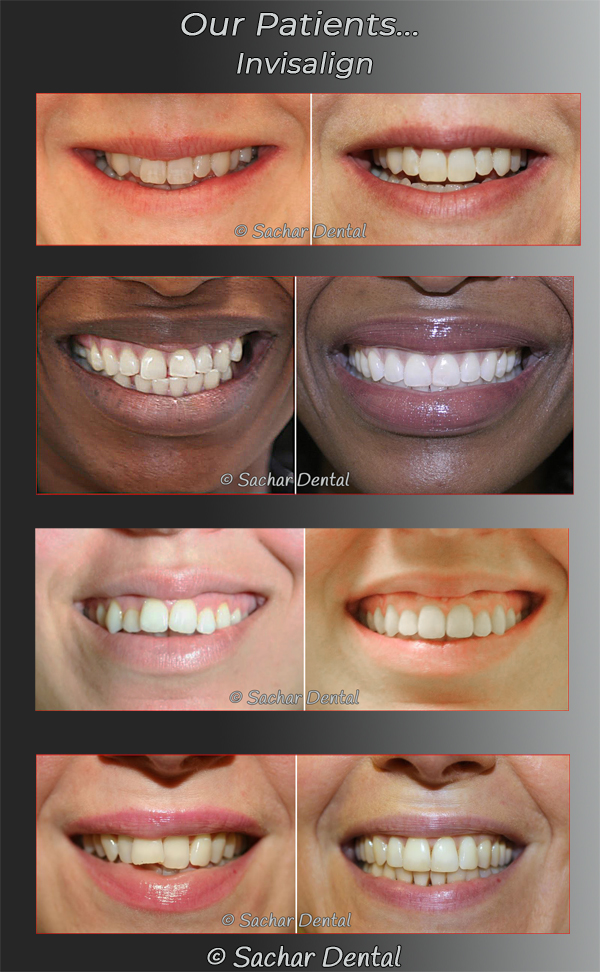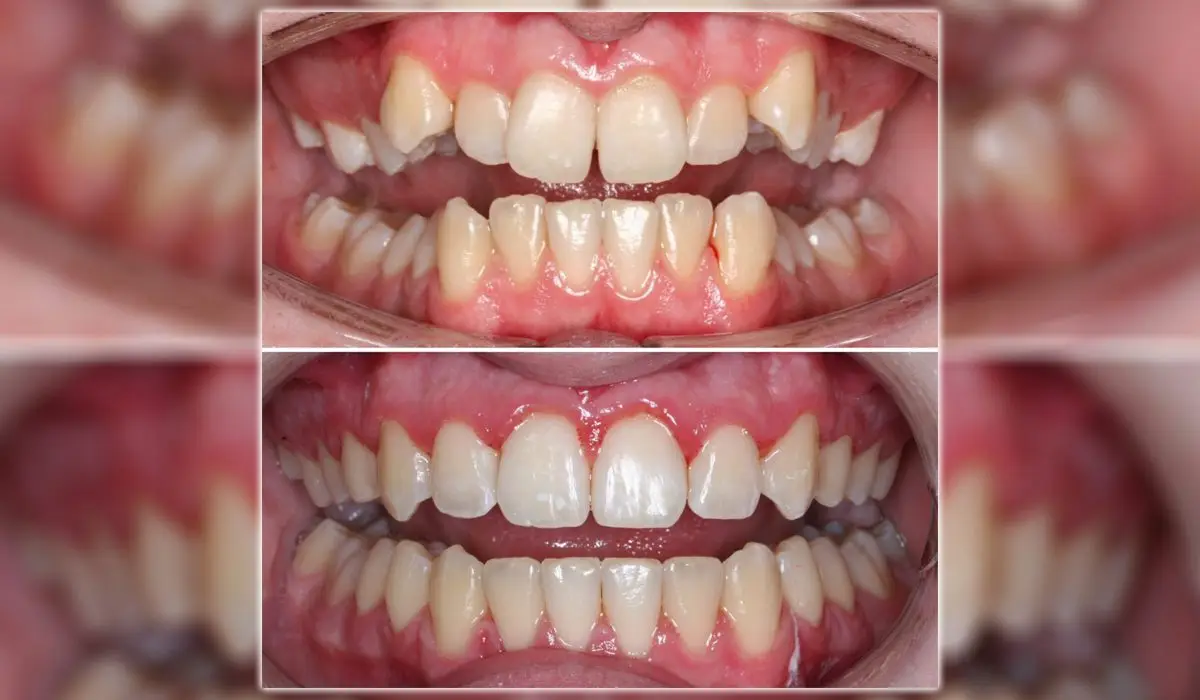The Ultimate Comparison: Invisalign vs. Traditional Dental braces for Grownups
The Ultimate Comparison: Invisalign vs. Traditional Dental braces for Grownups
Blog Article
Invisalign vs. Traditional Braces: Which Choice Is Right for You?
When thinking about orthodontic treatment, the choice between Invisalign and standard braces presents numerous vital aspects that merit cautious analysis. Invisalign uses a very discreet alternative with detachable aligners, while conventional braces supply a much more visible yet efficient service for severe imbalance.
Overview of Therapy Choices

On the other hand, standard braces consist of steel brackets and wires that are bonded to the teeth. This approach uses constant stress with time to accomplish alignment. While efficient for complicated orthodontic issues, conventional braces call for routine gos to for changes and can present obstacles in keeping dental hygiene because of the problem of cleansing around cords and brackets.
Both alternatives have their advantages, and the option commonly hinges on particular oral problems, way of life preferences, and person conformity. Eventually, seeking advice from an orthodontic professional is essential for figuring out one of the most suitable therapy plan tailored to private needs. Understanding the subtleties of each choice can considerably affect the general success of orthodontic therapy.
Visual Considerations
A significant aspect influencing the selection between Invisalign and typical dental braces is the visual appeal each therapy uses. Invisalign aligners are crafted from clear plastic, making them practically unseen when used.
In comparison, traditional braces contain metal brackets and wires, which can be more obvious. While advancements in orthodontic modern technology have resulted in the growth of smaller braces and colored elastics, traditional braces still maintain a more obvious account. For some people, the exposure of dental braces may discourage them from looking for necessary treatment.
Inevitably, the selection between Invisalign and typical dental braces may depend upon personal choices relating to visual appeals. People who prioritize discretion frequently lean towards Invisalign, while those who are much less worried concerning presence may go with standard braces. Comprehending the visual implications of each alternative is important for making a notified choice that straightens with one's way of life and choices.
Convenience and Convenience

In terms of comfort, Invisalign aligners are removable, making it possible for people to appreciate their preferred foods without limitation and keep optimal oral health. Cleaning and flossing are simplified, as the aligners can be secured throughout these routines, whereas conventional braces call for mindful steering around brackets and cords.
Furthermore, Invisalign's click here for more info dynamic system permits less orthodontic sees. Clients typically obtain several sets of aligners at the same time, which can simplify the therapy procedure and lower time spent in the orthodontist's chair. In comparison, standard dental braces necessitate normal modifications, making them less convenient for those with active routines. Invisalign. In general, the comfort and comfort of Invisalign make it an appealing choice for numerous people looking for orthodontic therapy.
Therapy Duration and Effectiveness
While both Invisalign and standard dental braces work in remedying dental imbalances, the period of treatment can vary dramatically in between the 2 options. Commonly, Invisalign therapy can take anywhere from 12 to 18 months, depending on the complexity of the situation. The clear aligners function by progressively changing teeth into their wanted positions, and routine follow-ups with an orthodontist aid make sure progression stays on the right track.
In comparison, typical braces frequently need a longer dedication, generally ranging from 18 months to three years. This results from their set nature and the usage of brackets and wires, which can be extra effective for severe misalignments and intricate instances (Invisalign). The treatment efficiency of typical dental braces is well-documented, as they enable specific changes and better control over tooth activity
Ultimately, the option between Invisalign and traditional dental braces might depend upon both the awaited therapy period and the particular oral problems handy. Consulting with an orthodontist is critical, as they can give tailored recommendations based on specific requirements, making sure the chosen approach lines up with wanted end results and durations.
Expense Contrast and Insurance Options
Expense plays a significant role in the decision-making procedure for people thinking about orthodontic treatment, whether going with Invisalign more helpful hints or conventional braces. Generally, the cost of Invisalign varieties from $3,000 to $8,000, while conventional braces generally cost in between $2,000 and $6,000. Factors affecting these costs include the intricacy of the situation, the period of therapy, and geographical location.
Insurance policy coverage can significantly affect out-of-pocket costs. Lots of oral insurance coverage plans supply partial protection for orthodontic treatments, yet the specifics can vary commonly. It is important for clients to examine their insurance plan to figure out the extent of coverage for either choice. Usually, conventional braces might be extra frequently covered by insurance coverage strategies compared to Invisalign, which some insurance firms classify as an aesthetic treatment.
In addition, several Your Domain Name orthodontic practices provide adaptable layaway plan, making both treatment options much more accessible. Clients ought to ask about potential funding options and price cuts for upfront repayments. Assessing the total cost, including insurance policy benefits and settlement strategies, is important for making a notified choice that lines up with both aesthetic preferences and spending plan factors to consider.

Final Thought
In summary, the choice between Invisalign and conventional braces rests on multiple elements, consisting of visual choices, convenience, therapy period, and cost. Invisalign provides a discreet, removable option that promotes dental hygiene and dietary flexibility, while standard braces might be better for intricate dental issues and often come with a reduced price point. Inevitably, appointment with an orthodontist is necessary to evaluate specific circumstances and figure out one of the most ideal therapy alternative for achieving ideal dental positioning.
When considering orthodontic treatment, the selection in between Invisalign and traditional dental braces provides a number of important aspects that warrant careful assessment.Contrasting Invisalign and standard dental braces discloses distinct treatment choices for orthodontic correction.While both Invisalign and conventional dental braces are effective in dealing with dental misalignments, the period of therapy can differ considerably between the two options.Price plays a considerable duty in the decision-making procedure for people considering orthodontic treatment, whether deciding for Invisalign or typical braces.In summary, the selection in between Invisalign and traditional braces pivots on several elements, consisting of aesthetic choices, convenience, therapy period, and expense.
Report this page